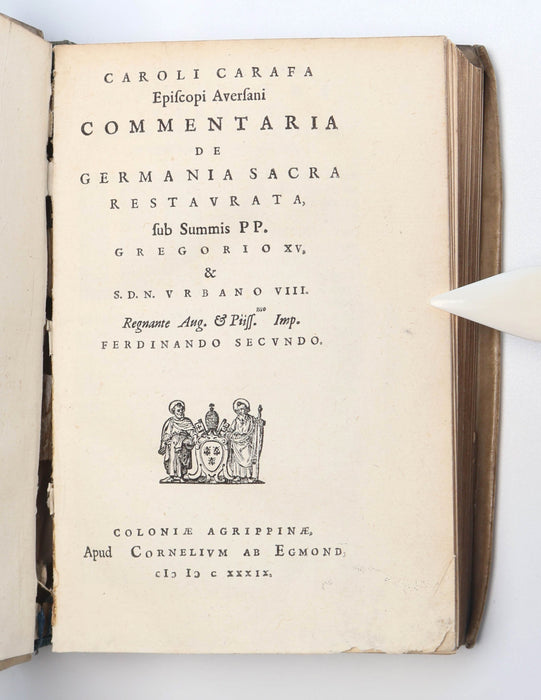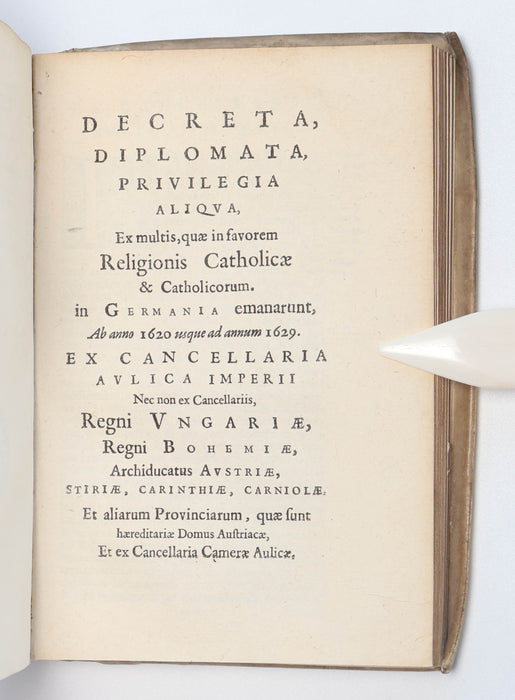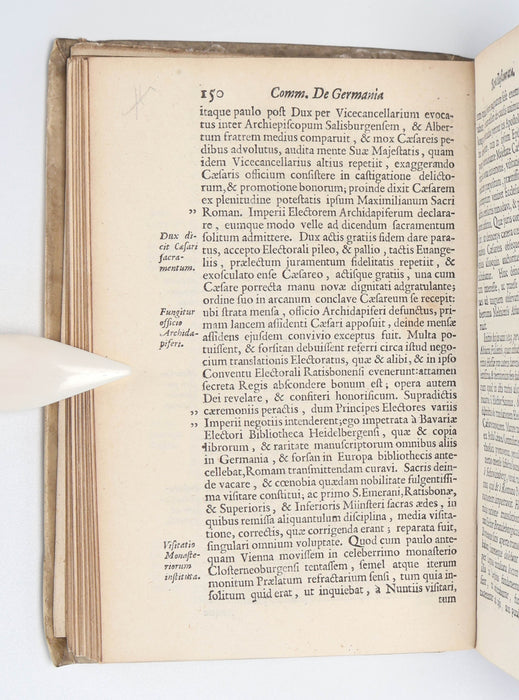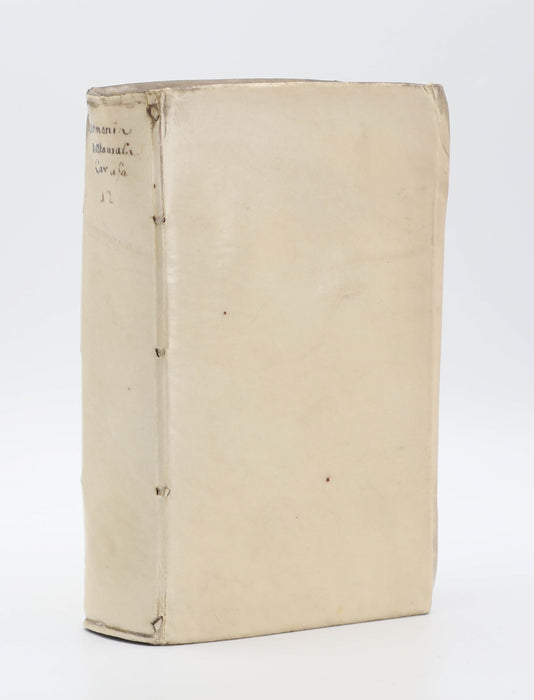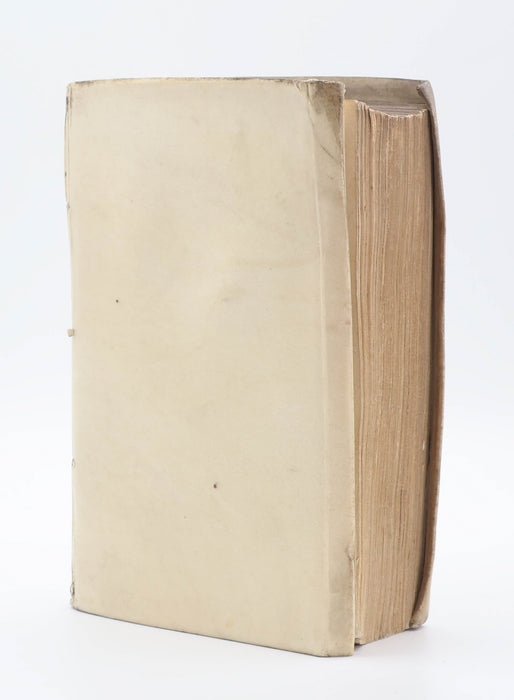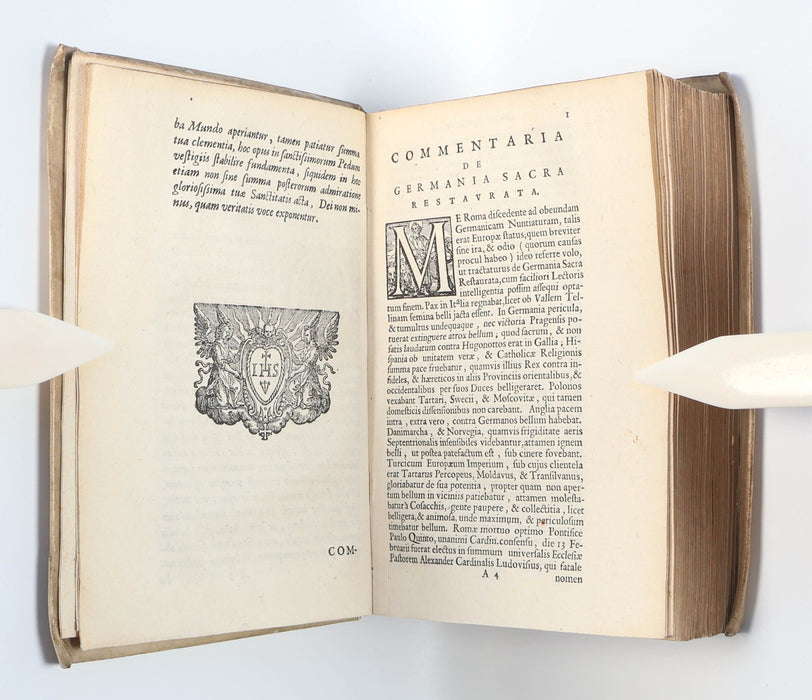
THE FATE OF THE BIBLIOTHECA PALATINA
[Carafa, Carlo]: Commentaria de Germania Sacra restaurata, sub Summis PP. Gregorio XV, & S.D.N. Urbano VIII. Regnante Aug. & Piiss.mo. Imp. Ferdinando secondo. [bound with]: Decreta, diplomata, privilegia aliqua, ex multis, quae in favorem Religionis Catholicae & Catholicorum. In Germania emanarunt, ab anno 1620 usque ad annum 1629. Ex Cancellaria aulica imperii nec non ex Cancellariis Regni Ungariae, Regni Bohemiae, Archiducatus Austriae, Stiriae, Carinthiae, Carniolae, et aliarum provinciarum, quae sunt haereditariae Domus Austriacae, et ex Cancellaria Camerae Aulicae. Coloniae Agrippinae [Cologne], apud Cornelium ab Egmond, 1639.
Copy in contemporary binding of the first Cologne edition of a notable commentary on the Edict of Restitution (1629), a controversial proclamation issued during the counter Reformation. This study offers an interesting insight into one of the most significant episodes of book plundering in history.
Proclaimed by Holy Roman Emperor Ferdinand II, the Edict of Restitution ‘sought to enforce a strict interpretation of […] the Peace of Augsburg of 1555, returning to Catholic possession a large number of monasteries, convents, and other institutions that had been secularised by Protestant states between 1552 and the outbreak of the Thirty Years’ War’ (Forster, p. 205). The edict was ultimately revoked by the Peace of Prague (1635).
This commentary on the edict was written by Carlo Carafa (1584-1644), bishop of Aversa and Apostolic Nuncio to Emperor. The earliest editions were printed in Aversa (1630, 1631) and Vienna (1630). Of book historical interest, Carafa describes General Tilly’s seizure of the Heidelberg Library in 1622 (p. 150), a large collection given to Pope Gregory XV as a symbolic gesture. In terms of the rarity of its manuscripts, the Palatinate Library of Heidelberg surpassed all other contemporary libraries in Germany and perhaps in Europe (raritate manuscriptorum omnibus aliis in Germania, & forsan in Europa bibliothecis anticellebat). Most of it is presently in the Vatican Library.
Description:
Two parts in one volume, 15.8 x 10.7 cms in binding, octavo, pp. [6] 352 [18]; 308 [i.e. 208]. Collation: A-Z8, Aa1-4; Aa-Nn8 [includes final blank at end of part 1]. Printed decorative initials and tailpieces, printed marginal paratext. Bound in contemporary vellum over boards with fore edge cover extensions. Two sets of lettering to spine (‘Germania Restaurata Carafa’; ‘12’). Modern pencil notes to endpapers. Bolts partially uncut (sigs O2-O3). Condition (textblock): light browning and occasional small stains. Condition (binding): slightly skewed, separating from textblock.
Bibliography
VD17 12:115333T.
Bepler, Jill, ‘Vicissitudo Temporum: Some Sidelights on Book Collecting in the Thirty Years War’, Sixteenth Century Journal 32:4 (2001): 953-68.
Forster, Marc R., ‘The Edict of Restitution (1629) and the Failure of Catholic Restoration’, in The Ashgate Research Companion to the Thirty Years' War (Farnham, Ashgate), pp. 205-15.

